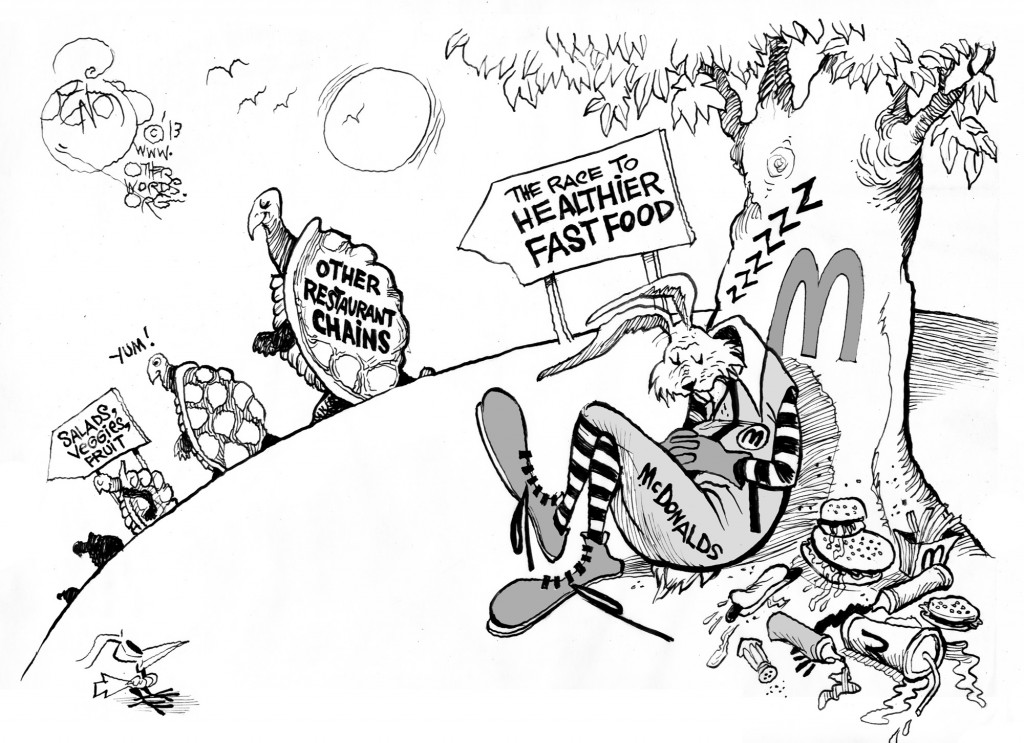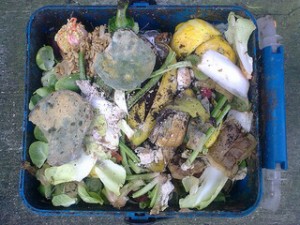Our throwaway electronics harm people overseas, but new trends in responsible design are not just smart—they’re kind.
posted Oct 11, 2013

When Ted Smith looks at a smartphone, he doesn't see a multipurpose gadget. He sees faces. He sees the face of the Indonesian or Ugandan miner who unearthed the raw materials. He sees the face of the factory worker who lives on a corporate campus in China and works long shifts, exposed to hazardous chemicals while assembling minuscule components. He sees the face of the salesperson at Best Buy or Target, and the face of the customer. He sees the faces of those who encounter the product after it’s been jettisoned and shipped halfway around the world to regions awash in electronic waste.
Imagine a phone that’s made using conflict-free minerals and is encased in a shell made of nontoxic chemicals.
Smith, 67, began tracking the electronics industry in the early 1970s. Seemingly overnight, a swath of California morphed into an epicenter of new technology. As massive semiconductor and consumer electronics manufacturers sprang up and churned out cutting-edge products, Smith rounded up community members to take a stand against the industry’s lack of transparency about the chemicals used along the production line and the threats these substances posed to workers, the environment, and nearby residents. In 1982, Smith founded the Silicon Valley Toxics Coalition. Twenty years later, he expanded his activist scope and co-founded the International Campaign for Responsible Technology.
“We realized early on that this industry was going to be a major engine of the future,” Smith says. “And we had broad-based concerns. It wasn’t just environmental. There were labor-rights issues, health issues, the need to preserve neighborhoods.”
Over the past 40 years, Smith’s worries have manifested on a global scale. The consumer electronics industry is now a multibillion-dollar juggernaut that churns out new products year-round. In 2012, sales of electronics in the United States topped $200 billion, according to the Consumer Electronics Association, an industry group that represents 2,000 companies, including Sony, Samsung, and Apple. The average American household now owns 24 electronic products, many of which will be rendered obsolete within a few years.
So it should be no surprise that consumer electronics is the fastest-growing segment of the U.S. waste stream, according to the Environmental Protection Agency (EPA). In 2009, the most recent year for which the EPA has data, 2.37 million tons of electronics were ready for “end-of-life management,” yet only a quarter of them were collected for recycling.
It doesn't just disappear

Every year, heaps of American e-waste, from smartphones to computers to stereo systems, are shipped to India, China, Ghana, Pakistan, Peru, and other developing countries. By some estimates, 80 percent of the U.S. e-waste collected ends up on foreign shores, where regulations are lax and incentive for risk high.
The goods are generally auctioned off in bulk to scrap companies and smelters. These companies pay locals—often including children—meager wages to strip smidgens of gold, copper, and palladium from the discarded devices. Sometimes, this involves concocting a noxious stew of cyanide and nitric acid, then burning the remaining plastic in crude firepits. Throughout the process, workers are exposed to lead, mercury, and cadmium, among other toxic substances.
One place our waste ends up is Guiyu, China, a port city of 150,000 on the South China Sea. As documented by the Basel Action Network, Guiyu is home to more than 5,000 small, mostly family-run businesses that trade in e-waste. A study published in the Journal of Environmental Health Perspectives found that children living in Guiyu had significantly higher levels of lead in their blood than children from Chendian, a nearby city with no e-waste processing.
Meanwhile, the ill effects of e-waste may be circling back to U.S. dinner plates. Researchers at Monmouth University released a study this spring that found high levels of lead in U.S. rice imports. One possible cause is the electronic waste industry, the lead author said in an interview with the BBC.
Benign by design
But to make meaningful progress on the e-waste crisis, Smith says, we can’t just focus on the waste. From mining to manufacturing to recycling, consumers, corporations, and governments need to rethink the life of our devices from beginning to end.
Imagine a phone that’s made using conflict-free minerals and is encased in a shell made of nontoxic chemicals. Imagine if that same phone, which looks and works like every other touchscreen smartphone on the market, was manufactured under the supervision of labor-rights organizations and in close collaboration with an established, reputable e-waste recycler that made sure every reusable and recyclable component was recovered safely.
That’s the ambition of Fairphone, a Dutch startup that’s currently producing its first batch of 20,000 phones—half of which have already been pre-ordered. The Fairphone is one of the most palpable examples of “benign-by-design,” a school of thought that aims to make products less harmful throughout their entire life cycle.
So far, the most significant benign-by-design achievements have been in the field of green chemistry, buried in academic journals. A small tweak in how a plastic is produced could make a product safer to build and disassemble. Fairphone is an instance where the benign-by-design mentality is helping meet a blossoming demand for sustainable electronics.
While Smith sees promise in Fairphone’s approach and the sustainable electronics movement, major manufacturers “living under the dictate of the quarterly profit” remain the largest obstacle. He says, “To really develop benign-by-design, we have to change the business model.” And that includes compelling manufacturers to devise effective take-back programs that are widely publicized and easy for consumers to access.
States lead the way
Wisconsin’s program, launched three years ago, has already collected more than 100 million pounds of e-waste.
One persistent barrier in the United States, however, is the lack of federal legislation to make sure e-waste is properly recycled. Compare that with the European Union, which last year imposed a strict directive requiring that by 2019 member countries collect 65 percent of the weight of all electronics put on sale in the preceding three years or 85 percent of all e-waste generated per year. Under the EU’s policy, retailers will be required to take e-waste from consumers. Companies—retailers, manufacturers, and recyclers—found to be in violation could be hit with stiff fines.
Further complicating matters is that the United States isn't a signatory of the Basel Convention, an international treaty regulating how hazardous materials, including e-waste, are transported and disposed of. Fortunately, a growing number of states are implementing e-waste recycling programs. If done properly, they can steer millions of pounds of potentially harmful electronics into sustainable, regulated channels rather than overseas where there’s minimal oversight.
“Every state is very different and poses unique opportunities and challenges for increasing electronics recycling,” Sarah Murray, coordinator of E-Cycle Wisconsin, said in an email.
Wisconsin’s program, launched three years ago, has already collected more than 100 million pounds of e-waste. With budgets tight across the country, however, she warns that some states may not have the resources to staff and implement an e-waste program. “We were … fortunate that the legislation gave us dedicated positions for this purpose. That has meant we've had enough manpower to do necessary administrative tasks, educate stakeholders and the public, provide compliance assistance, and conduct inspections.”
As the piecemeal push to alleviate the effects of e-waste becomes more cohesive, Smith and the International Campaign for Responsible Technology are homing in on a handful of specific objectives that could usher in a future of sustainable electronics. One of their biggest ambitions is to see a requirement that companies disclose all of the chemicals used in a product’s lifecycle.
“Nobody I know knows the number of chemicals used in the manufacturing of electronic products. It’s probably in the range of several thousand. Some are very standard, run-of-the-mill chemicals, but others are exotics … and many are extremely hazardous,” Smith says. “We need disclosure of the entire chemical footprint. Until we understand that better, it’s difficult to push.”
But perhaps the biggest catalysts for change are the faces Smith sees. He mentions the possibility of building an app that shows the faces of all the people who’ll encounter the phone along the supply chain, from the miners to the factory workers to the smelters.
“I do believe if people could see the harm, they wouldn't support it,” he says.

Chris Sweeney wrote this article for
The Human Cost of Stuff, the Fall 2013 issue of YES! Magazine. Chris is a Boston-based writer interested in global health and science.







 Chris Sweeney wrote this article for
Chris Sweeney wrote this article for 






